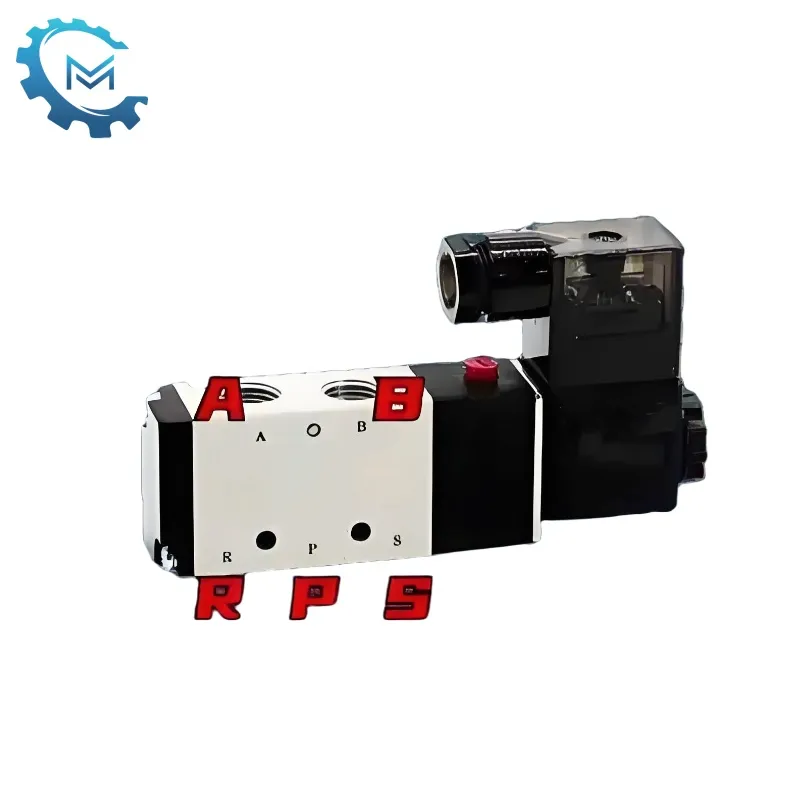- English
- Español
- Português
- русский
- Français
- 日本語
- Deutsch
- tiếng Việt
- Italiano
- Nederlands
- ภาษาไทย
- Polski
- 한국어
- Svenska
- magyar
- Malay
- বাংলা ভাষার
- Dansk
- Suomi
- हिन्दी
- Pilipino
- Türkçe
- Gaeilge
- العربية
- Indonesia
- Norsk
- تمل
- český
- ελληνικά
- український
- Javanese
- فارسی
- தமிழ்
- తెలుగు
- नेपाली
- Burmese
- български
- ລາວ
- Latine
- Қазақша
- Euskal
- Azərbaycan
- Slovenský jazyk
- Македонски
- Lietuvos
- Eesti Keel
- Română
- Slovenski
- मराठी
- Srpski језик
How to determine the number of positions and ways of a solenoid valve?
2025-05-29
In the field of solenoid valve manufacturing, the number of positions and ways of solenoid valves is an important reflection of its core functional characteristics, and is also a key consideration for customers when choosing products. Today, we will explain in detail how to accurately determine the number of positions and ways solenoid valves and their application scenarios.
1. What is the number of positions and ways of a solenoid valve?
In a solenoid valve, the number of positions and the number of ways describe the internal channels and working states of the solenoid valve, and refer to the number of gas or liquid channels inside the solenoid valve. For example, a two-way solenoid valve means that it has two channels, usually one channel is used for air or liquid inlet, and the other channel is used for air or liquid outlet. The number of positions indicates the number of different working states that the solenoid valve can be in. Taking a two-position solenoid valve as an example, it has two working states, one is the power-on state, and the other is the power-off state. In these two states, the on-off conditions of the gas or liquid circuit will be different.
2. How to judge the number of positions and ways from the appearance and structure
Although we cannot directly tell the number of positions and ways from the appearance, we can observe the number of interfaces of the solenoid valve. Generally speaking, the number of interfaces is related to the number of channels. For example, a three-way solenoid valve usually has three interfaces, corresponding to the air inlet, air outlet and exhaust port. However, this is not absolute.
It is more accurate to judge from the structure. Taking a two-position three-way solenoid valve as an example, its internal structure is relatively simple, usually consisting of a solenoid coil and a valve core. When the solenoid coil is energized, the valve core will be attracted, thereby changing the on-off state of the gas or liquid circuit. In the off-power state, the valve core will return to the initial position and restore another on-off state. We can make an accurate judgment by disassembling the solenoid valve and observing the movement trajectory of the valve core and the distribution of the channels.
3. Application scenarios
In the manufacturing process of solenoid valves, we design and manufacture solenoid valves with different positions and ways according to different application scenarios. For example, in an automated production line, for simple cylinder control, a two-position three-way solenoid valve can often meet the needs. For some complex automation equipment, such as robot joint control or complex pneumatic systems, multi-position multi-way solenoid valves may be required.
In hydraulic systems, solenoid valves also play a vital role. For example, in the hydraulic systems of some construction machinery, solenoid valves are needed to control the flow direction and pressure of hydraulic oil to achieve various actions such as lifting and rotation of the equipment. At this time, multi-position multi-way solenoid valves are particularly important. We design and manufacture suitable solenoid valves based on the pressure, flow and control requirements of the hydraulic system to ensure that they can work stably and reliably in complex hydraulic environments.
Conclusion
As a solenoid valve manufacturer, we are able to create high-quality, high-performance solenoid valve products for customers through sophisticated manufacturing technology, scientific structural design and strict quality inspection to meet the needs of different application scenarios.





